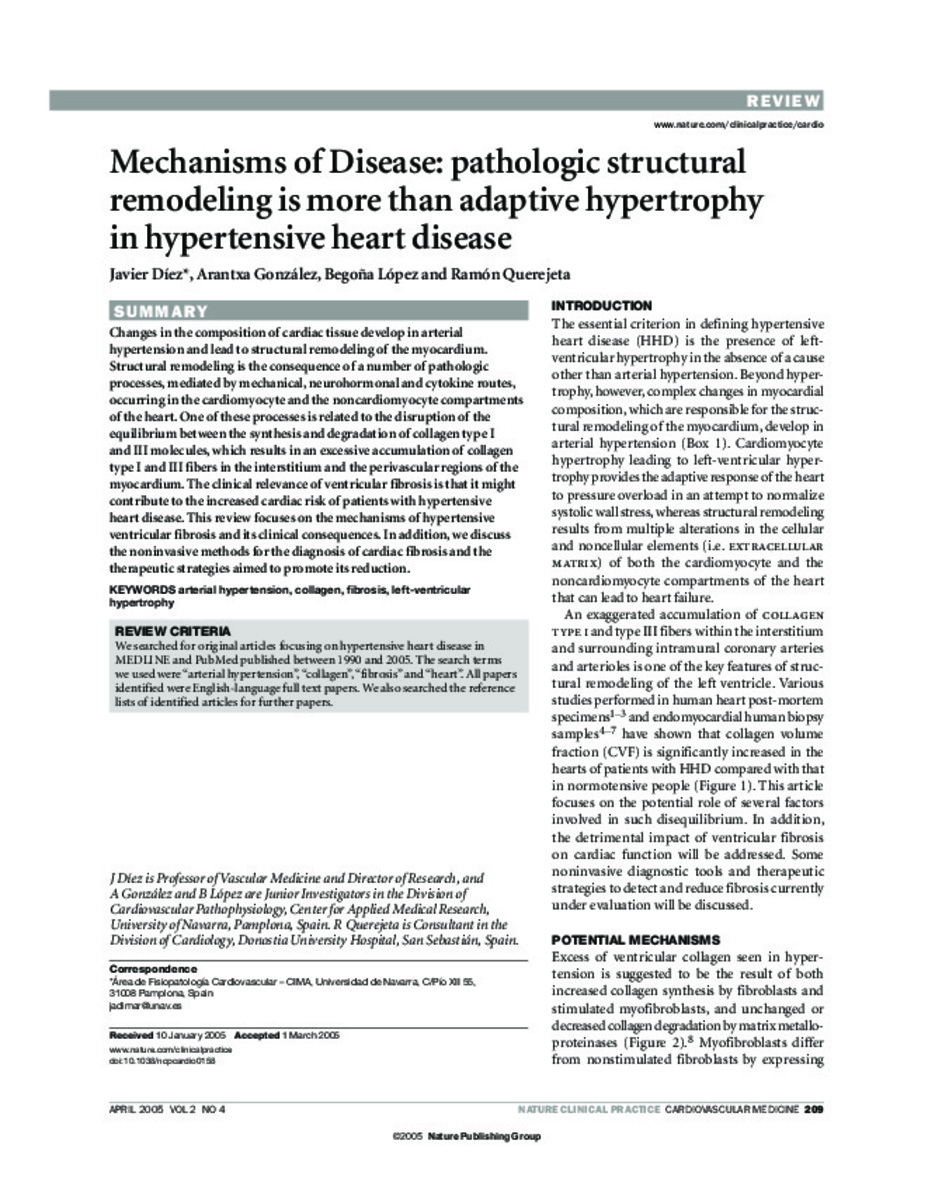Mechanisms of disease: pathologic structural remodeling is more than adaptive hypertrophy in hypertensive heart disease
Keywords:
Arterial hypertension
Collagen
Fibrosis
Left-ventricular
Hypertrophy
Publisher:
Nature Publishing Group
Citation:
Diez J, Gonzalez A, Lopez B, Querejeta R. Mechanisms of disease: pathologic structural remodeling is more than adaptive hypertrophy in hypertensive heart disease. Nat Clin Pract Cardiovasc Med 2005 Apr;2(4):209-216.
Statistics and impact
0 citas en

0 citas en

Items in Dadun are protected by copyright, with all rights reserved, unless otherwise indicated.










